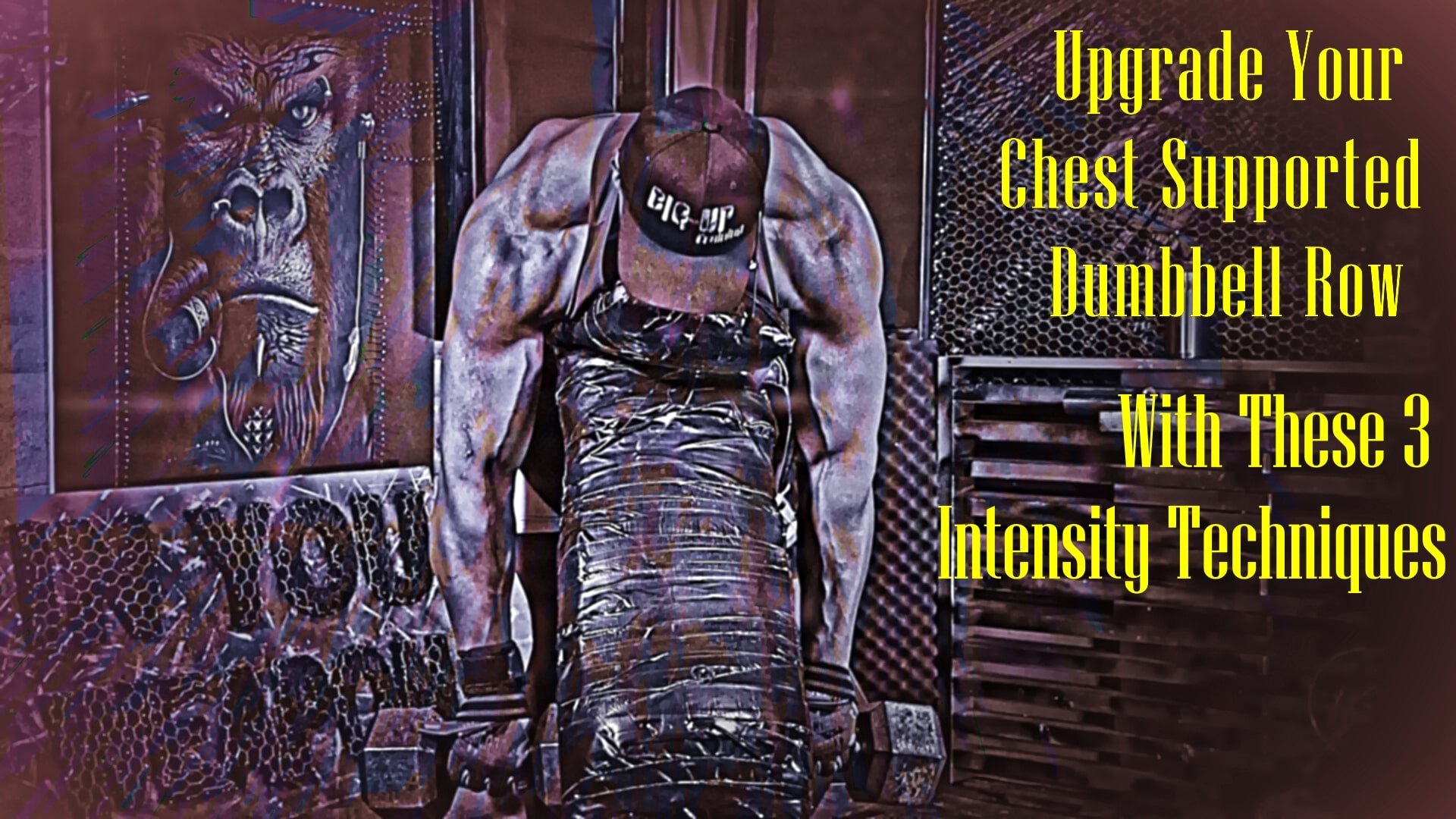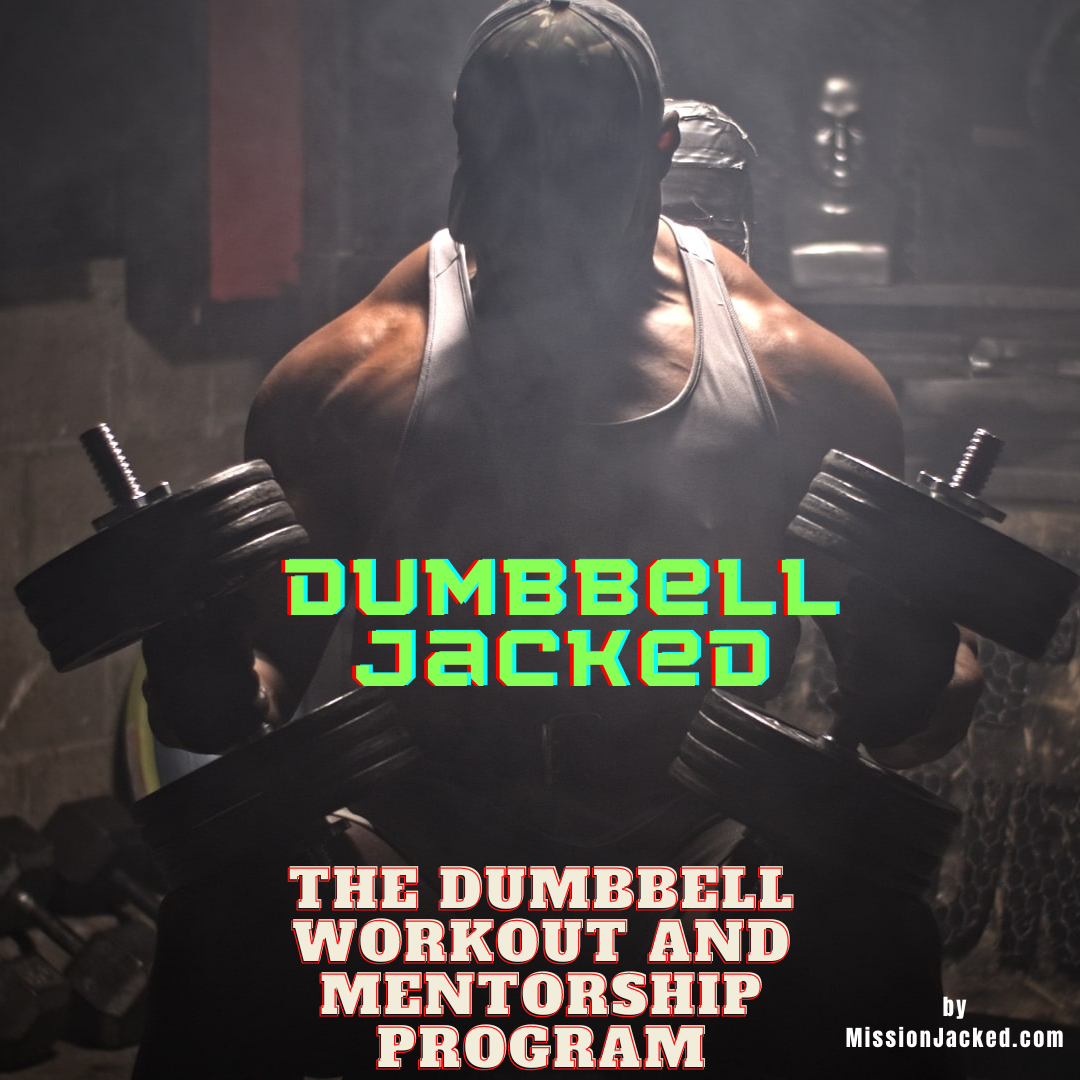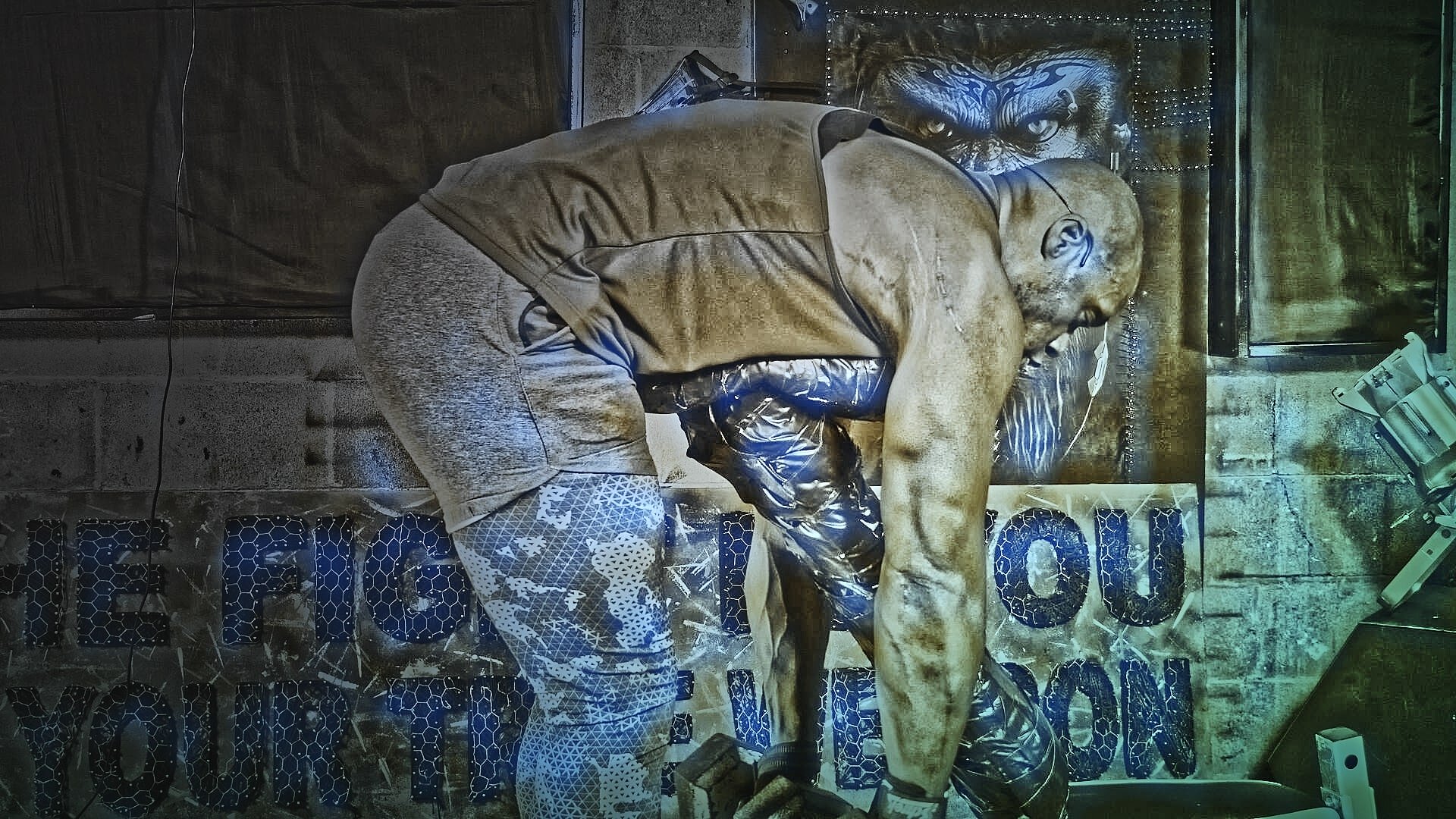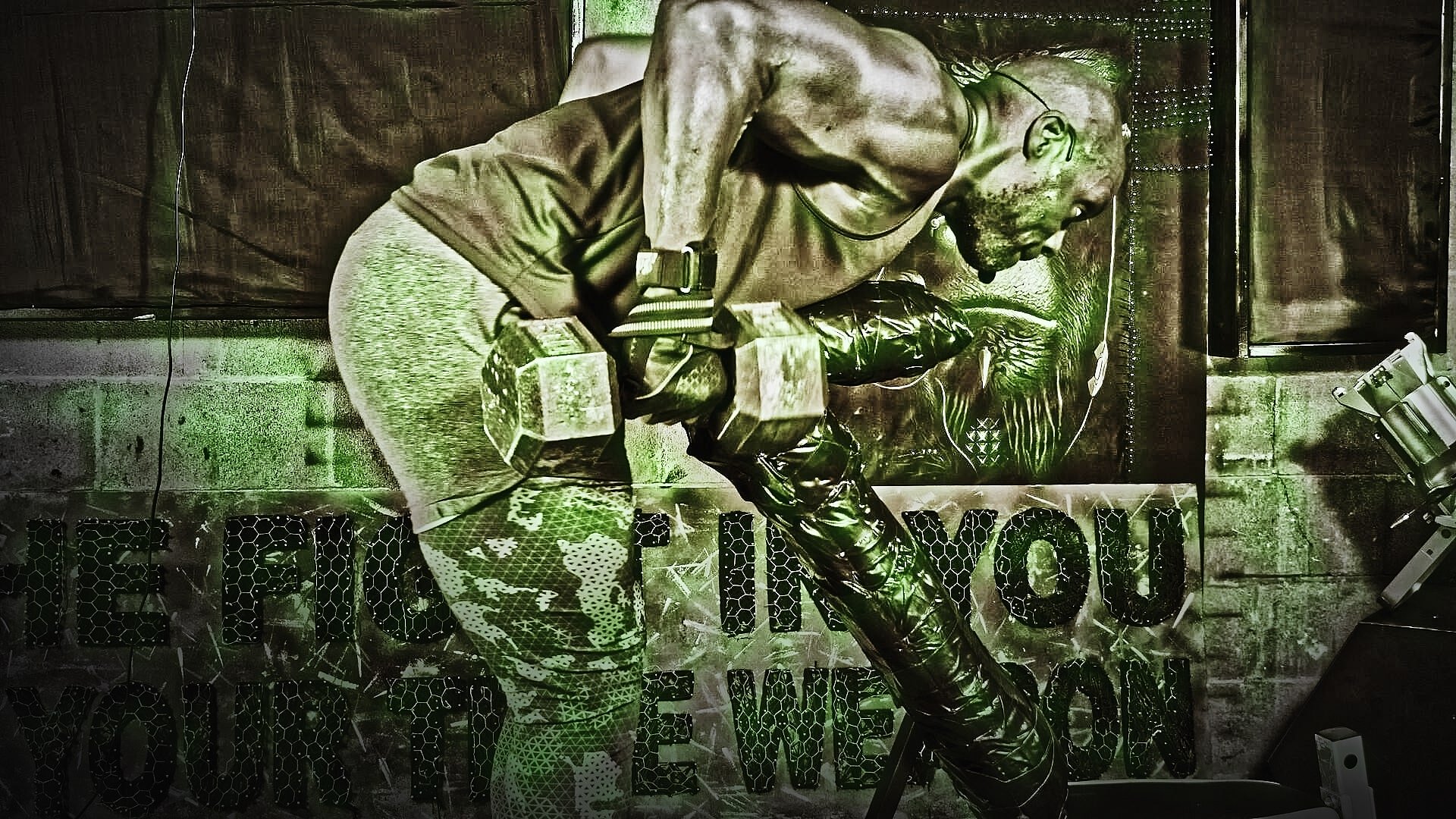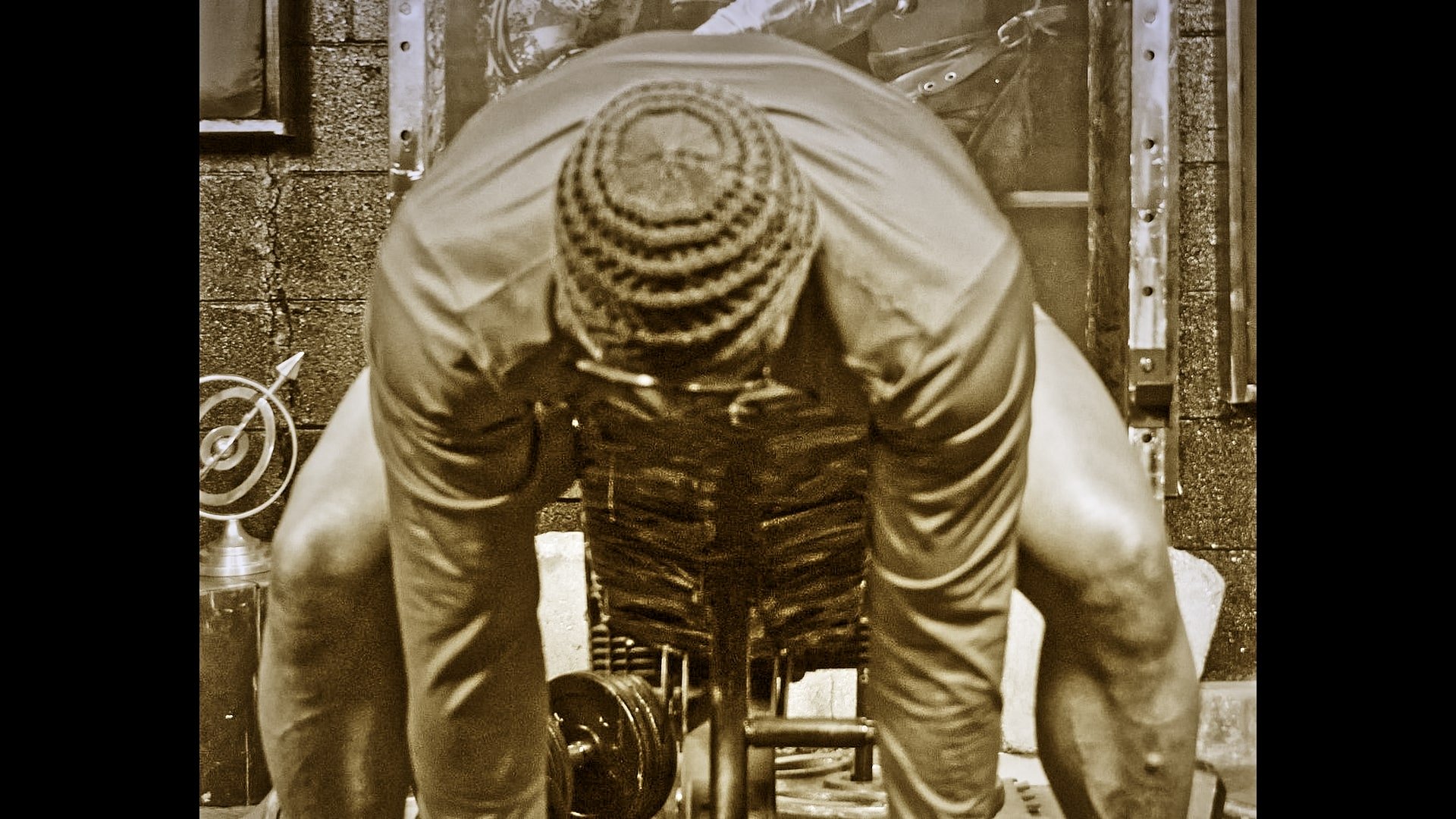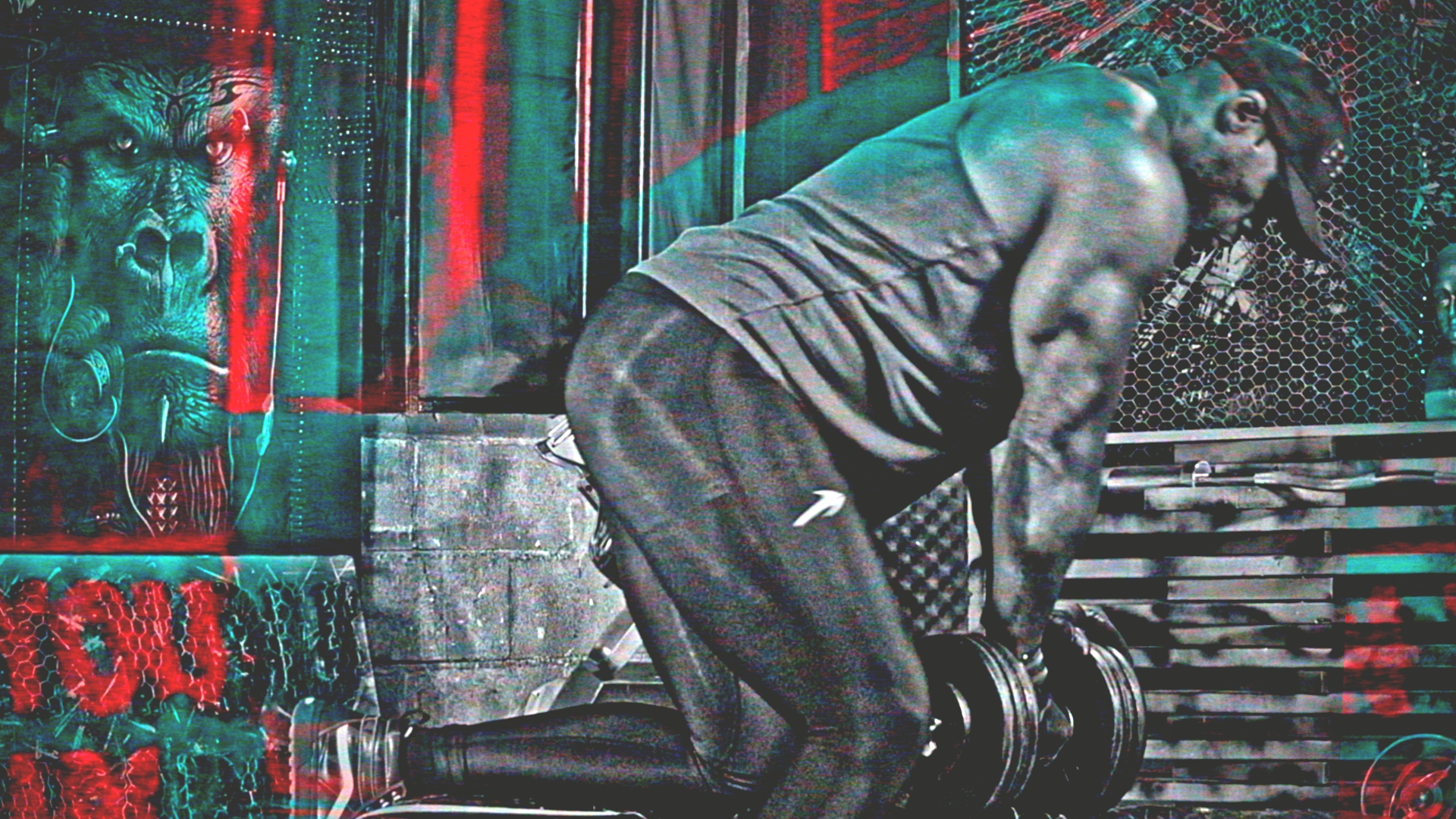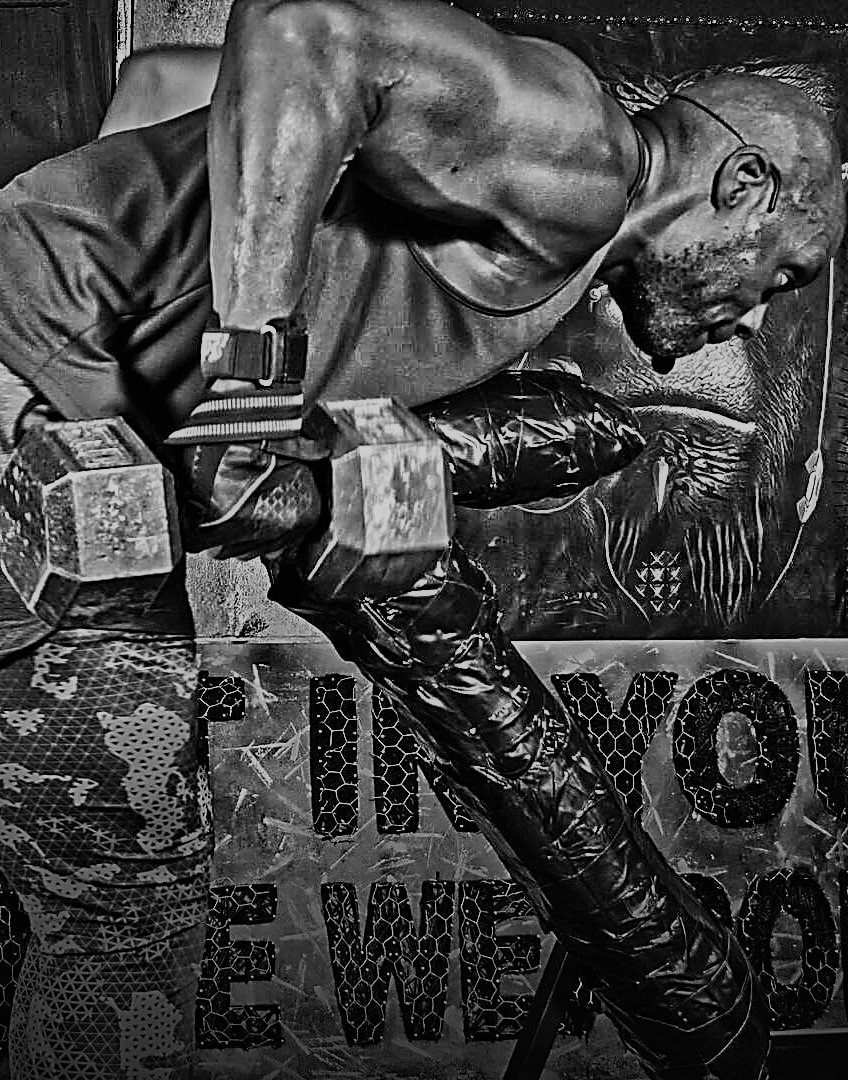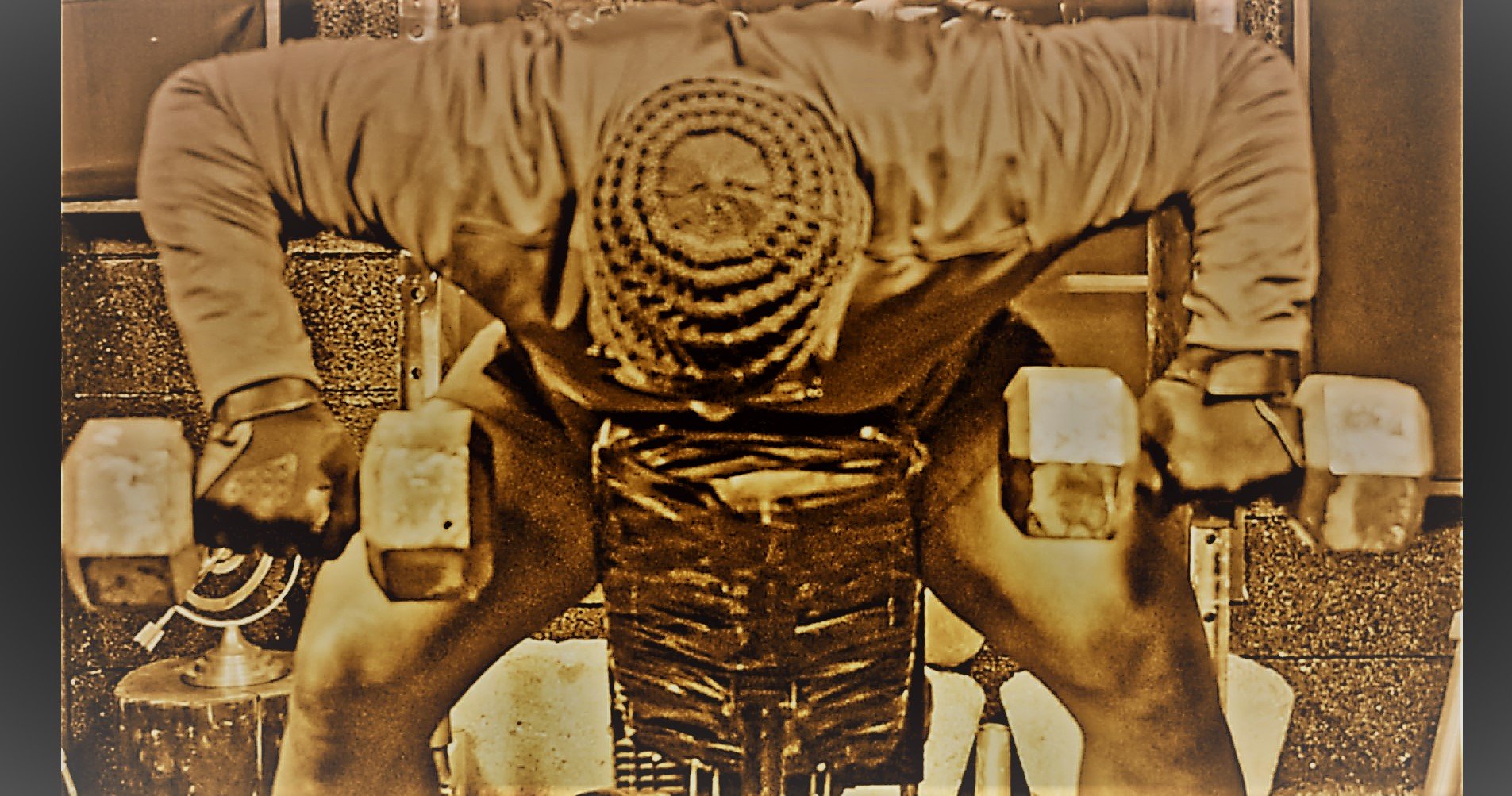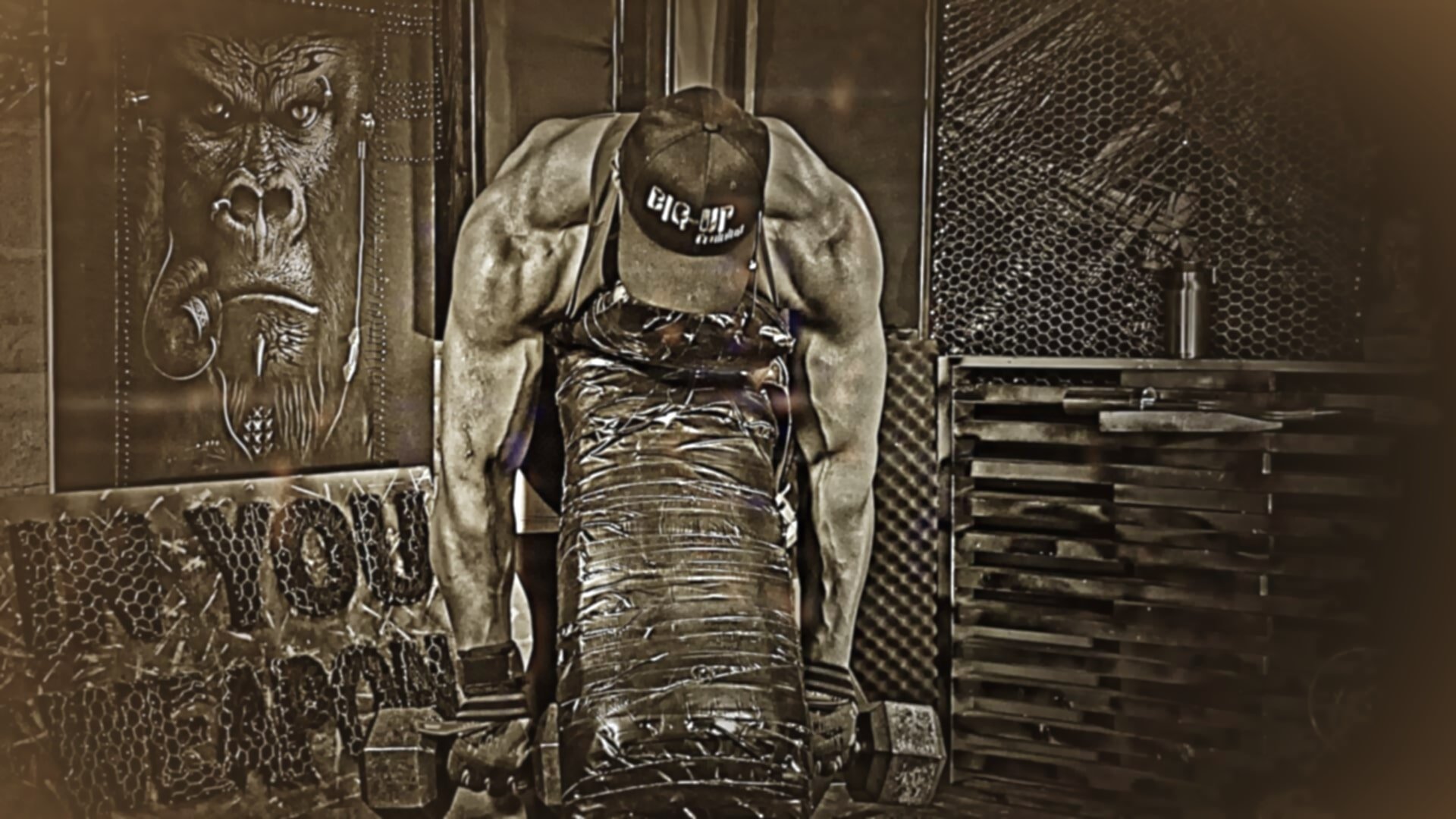Mission Jacked.com
Upgrade Your Chest Supported Dumbbell Row With These 3 Intensity
Techniques
& Get A Thicker Back In The Process
More Back Growing Articles
Do The Chest Supported Row For A Bigger Back – Use These 6 Huge Variations
7 Dumbbell Lat Exercises To Build A Monster Wide Back. Exercise Four Will Bury You!
Try the Best Back and Bicep Workout With Dumbbells For a Size Increase
2 Dumbbell Back Workout Exercises For Crazy Thickness
7 Lower Lat Exercises For A Beefier Wingspan
Pull Your Way To a Bigger Back With The Underhand Lat Pulldown
Prone Row Your Way To A Bigger Back While Improving Your Bench Press
Do The Reverse Grip Dumbbell Row For Bigger and Denser Lower Lats
The Supinated Pulldown – A Back-Widening Present From The Lat Gods
Get Jacked With This Home Dumbbell Workout For Men
The 3 Best 25 lb Dumbbells On The Market
Chest Supported Rear Delt Row
Dumbbell Clean and Press Your Way To A Stronger and Fitter Physique!
In this article, I’ll show you how to upgrade your Chest Supported Dumbbell Row with 3 intensity techniques to help you grow a thicker back. These methods will permit you to go further than conventional failure to work the back muscles even harder, thus delivering a stimulus to get you bigger and stronger.
If you train at home with dumbbells, you may have come across the Chest Supported Row. If you haven’t implemented this movement into your back workout, you are most certainly missing out on extra back thickness that can be gained from this brilliant exercise.
For many, the Chest Supported Row has become a staple for a few reasons.
Lifters who have a weak lower back or tight hips, often use the Chest Supported db row as a replacement exercise for the Bent-Over-Row because it places less stress on the spine.
If you want a stronger pulling force production without having to worry about stabilizing your muscles and core in the hip hinge position, the Chest Support Row enables you to push into the pad which can help to generate additional force.
This exercise also allows you to train to failure without your form breaking down as it would during a set of heavy bent-over rows.
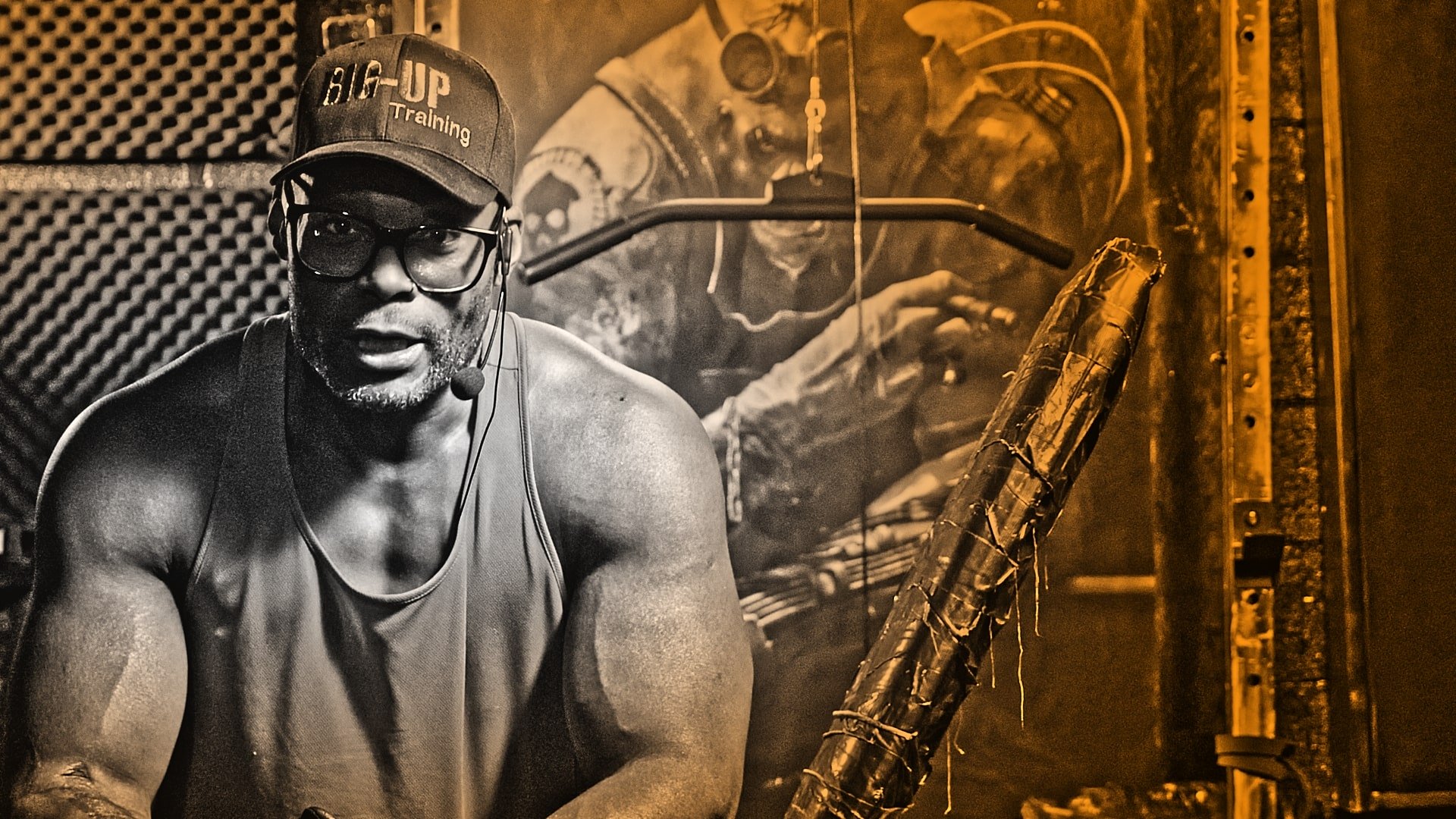 Psymon H, the 52 Year old Warhorse with 40 Years lifting experience.
Psymon H, the 52 Year old Warhorse with 40 Years lifting experience.I’m Psymon H., architect of the Mission Jacked movement, creator of the BIG-UP Home Training System, and the man making his name from improving physiques and growing natural muscle with minimal equipment.
The training techniques I’m about to share should not be tried by the inexperienced novice lifter. These are training methods for lifters who have been training for several years and have surpassed novice and early intermediate level training.
Before I share these techniques, I’m going to give you a quick overview of the exercise with cues, so you can be off and rowing in good form before upping the intensity.
Items Needed: Incline Bench, a pad (optional), and one pair of dumbbells.
How To Do The Chest Supported Dumbbell Row Correctly:
Fix your bench at a 75-degree angle and turn it around so you are coming from behind the bench. Place a pad on the top for comfort.
Cue 1: Grab a dumbbell in each hand with a neutral grip and rest your torso on the pad. With the dumbbells hanging below you, protract your shoulders by hunching over. (This protracted position is how you will finish each repetition to engage more upper back muscles.)
Cue 2: To start the repetitions, retract your shoulder blades by pulling them down. By doing this, you will activate the Lat muscles While getting a better mind/muscle connection in the process. Tighten your core and squeeze your Lats.
Cue 3: Row the dumbbells smoothly into your hips. Hold and squeeze briefly before lowering the dumbbells to the start position.
Cue 4: At the bottom of the movement, protract your shoulders. Repeat all of the cues as you go through each repetition.
Grip Tip: If you wish to target more upper back and rear deltoid muscles, use an overhand grip and keep the elbow wide as you bring the dumbbell up in line with your shoulders.
An underhand grip that drives the dumbbells into your hips and forces the elbows into your body will typically target the lower Lats, mid and lower trapezius muscles.
If you suffer from any elbow issues, use a neutral grip as it takes the stress away from the elbow area.
Find more Chest Supported Row variations to add to your workouts.
Choosing Urethane and Rubber Dumbbells For Your Home Gym
underhand cable pulldowns
prone db row
Chest Supported Dumbbell Row Angle:
When doing this exercise, you have two options on how to set up your bench. The first option is to use a 75-degree angle and turn the bench around so that you are performing the exercise by coming over the back with your head looking down the bench.
The second option would be to set your bench up at a 30-45-degree angle and face into the bench by laying your torso on the back pad.
While both positions have their merits, when it comes to involving more of the upper back muscles, option one allows you to better protract your shoulder blades at the end of the movement.
Try both options and see which one works best for you.
Is The Bent-Over Row the Same as Chest Supported Row?
There are some distinct differences between the two movements. With the db Chest Supported Row, there's less tension on the spine because you are being supported by the bench. With the Bent-over Row, you are in a hinge position which means you have to stabilize your core.
With Chest Supported Row, you are not using your hamstring and glute muscles the same way you would use them in the Bent-over Row position.
Chest Supported Dumbbell Row
Intensity Technique One:
Now we’ve got the exercise down, let’s go ahead and add three intensity techniques, you can use on your next back workout.
First, we’ll define what I mean by "intensity techniques" and who should and shouldn't use them. As stated above, intensity techniques are training methods for lifters who have been training for several years and have surpassed novice and early intermediate level training.
1: Drop Sets
When you complete a set to failure, reduce the weight to around 10% and immediately complete another set to failure.
You can do this as double-drop (reduce the weight once), triple-drop (reduce the weight twice), or go down-the-rack (use all sequential sets of dumbbells down a rack) sets.
Or You Could Do Down the Rack Drop Set:
Instead of doing the above drop sets, you could do a Down-The-Rack Drop Set. Begin with a weight you can perform six reps. Immediately on completion, pick up the next lightest set of dumbbells and hit another set. Replicate this procedure until you get to the lightest dumbbells you wish to use.
Here, it’s not essential to keep to a set number of repetitions for every drop-set. As the weights get progressively lighter, the more repetitions you may be able to complete.
underhand pull down
prone row
Chest Supported Dumbbell Row
Intensity Technique Two –
Fiber Sweep Triple Drop Sets
The fiber Sweep Triple Drop Set intensity technique works in three different ways.
Your first set of drop works on relative and connective tissue strength. How you do this is by using about 85-90% of your 1RM and performing 2 to 3 repetitions.
Your first drop set builds muscle mass and circulation. This is done by using a weight that allows you 8-10 repetitions.
The second drop set works the neuromuscular system and explosive fibers. This is done by doing one second up and one second down explosive reps of 6 to 8 repetitions.
For this last set, you do a set of 30 repetitions with a lightweight.
underhand pulldown
Intensity Technique Three: Rest-Pause Training
Your last training method allows you to achieve more repetitions using the same weight and works excellent when lactic acid burn forces you to stop with high reps.
First, you must complete a set to failure and rest for about 5 - 10 breathes before doing a few more repetitions with the same weight.
This can be performed 2 – 4 times, dependent on energy levels.
Option 1: Use a weight you can do 18 – 20 repetitions to failure and then take five breaths before performing 5 more reps – rest and repeat – rest and repeat.
Option 2: Use a weight you can perform only three reps with and do a set of six or more reps with it.
7 Dumbbell Lat Exercises To Build A Monster Wide Back. Exercise Four Will Bury You!
supinated pulldown
dumbbell press push
Choosing The Best Dumbbell Set With Rack 5 50 lb. Combo
How To Get The Best Out of Your Chest Supported Dumbbell Row Using These Three Techniques:
1: Break your workouts up into 4-week training blocks
2: Use one technique on a training block and then swap it out for another on training blocks two and three.
3: Perform the intensity technique once per week, and if you train your back multiple times per week, use straight sets on the other training sessions.
4: Always do the intensity technique first in your workout when you are at your freshest.
5: Add all weights and reps to a workout journal and try and compete with your previous week’s scores.
6: On weeks 5, 10, and 15 take a Deload phase when you do straight set training with lighter weight and no sets to failure.
7: Stay committed to performing the Chest Supported Dumbbell Row for three 4 week cycles and watch the results.
Try This Back and Bicep Workout With Dumbbells To Increase Muscle
how to grow lats
Chest Supported Dumbbell Row AKA:
1: Chest Rows
11: Chest Assisted Dumbbell Row
12: Chest Assisted Dumbbell Rows
15: Chest Supported Row with Dumbbells
18: Chest Supported Bent-Over-Row
20: Bench Assisted Dumbbell Row
22: Bench Assisted Dumbbell Rows
23: Incline Chest Supported Row
24: Incline Chest Supported Rows
25: Incline Dumbbell Chest Supported Rows
26: Chest Row
27: Lying Supported Neutral-grip Dumbbell Row
28: Chest Supported Seated Row
31: Chest Supported Incline Row
33: Chest Supported Incline Dumbbell Row
35: Bench Supported Dumbbell Row
36: 45-degree rows
37: Chest Supported Upper Back Row
38: Incline High Row
41: Horizontal Row with Dumbbells
43: Incline Dumbbell Chest Supported Row
44: chest supported upper back row
47: pronated chest supported row
48: dead stop db row
49: incline chest supported db row
50: machine chest supported row
55: chest-supported dumbbell row
Do The Chest Supported Rows For A Bigger Back – Use These 6 Huge Variations
7 db Lat Exercises To Build A Monster Wide Back. Exercise Four Will Bury You!
Try the Best Dumbbell Back and Bicep Workout For a Size Increase
2 Back Dumbbell Workout Exercises For Crazy Thickness
Dumbbell Pullovers For Lats - Build Width With These 4 Pullover Variations
Now you’ve built up your back knowledge with the Chest Supported Dumbbell Row, build up the rest of your physique with the following articles.
Best Dumbbell Only Chest Workout For Size If You Train at Home
Best Rear Delt Dumbbell Exercises For a Beefy Rearview Appeal
Try This Dumbbell Hamstring Workout For Size
Mission Jacked L.L.C
Address: 9407 NE Vancouver Mall Dr
STE 104 #1269
Vancouver, WA 98662 USA
Email: mission@missionjacked.com
